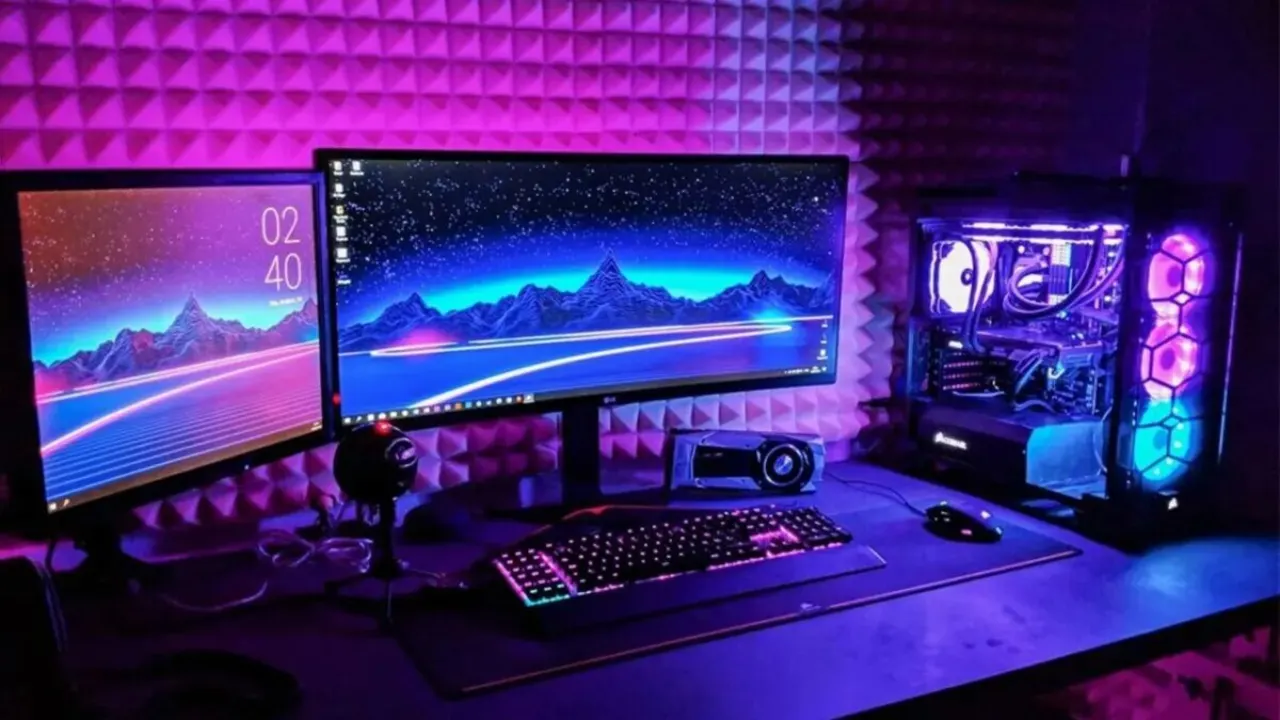News
Four simple tricks to optimize your video games on your gaming PC
Having a good computer is not everything, you have to know where to click.

- December 31, 2023
- Updated: March 7, 2024 at 1:22 PM

When we buy a powerful PC, we are eager to try games, live adventures that were previously impossible for us. Once installed, we set the game to 4K and Ultra graphics quality and… boom. The game doesn’t start.
Modern games are very graphically demanding and, in addition, they are optimized in the worst possible way. Programmers nowadays only think about developing titles for consoles and not for PC.
This makes computer players have to change computer parts very often. If you don’t have the best hardware, it seems like the gaming sector forgets about you.
For all those who want to play with the best quality without sacrificing a 60 fps frame rate along the way, these four tricks can come in handy for 2024.
Use an FPS counter
We often can’t tell if the computer is running smoothly or if the game is destroying us with its poor optimization. That’s why nothing beats an FPS counter and, if possible, a meter that gives us percentages of RAM, CPU, and GPU usage.
Consider it an extra tip, but I think it’s equally important to ensure proper optimization. I always make sure to activate a frames per second counter in the top right corner of the screen while playing, and I recommend you do the same.
It is not necessary to constantly monitor the frame rate, but using it -at least during the first two hours of gameplay- will help you quickly identify the places and moments in the game that demand more from the graphics card and determine their impact on performance.
In some cases, I even have a detailed summary of performance, but I usually disable both when I know no adjustments need to be made. I think having a dedicated frame rate counter is more reassuring than looking at fps or simply feeling the smoothness with which a game runs.
Nowadays, most games have a frame rate counter, but you can also use the one built into Nvidia GeForce Experience or AMD Adrenaline software.
Use the new scaling technologies: DLSS and FSR
You are likely to find Nvidia’s DLSS scaling technology or AMD’s FSR (or both in some cases) in most modern games, and I cannot recommend them enough.
Yes, it can be argued that visual fidelity is lost when rendering the game at a relatively low resolution and scaling it, but I haven’t had any issues with either.
I say this because I start with the “Quality” mode before making further adjustments, but I usually stick with the “Quality” or “Balanced” modes to get the best results. You can also use features like AMD frame generation or smooth motion frames for a smoother experience.
I have had more luck optimizing and getting better results with Nvidia’s DLSS than with AMD’s FSR, but both provide good performance currently and will help you achieve better performance in games.
Upscaling is often the first setting I tweak to determine if I can achieve the desired results before messing with anything else. It’s a great way to see instant performance improvements without compromising other visual aspects.
Yes, the image quality is slightly affected, but it is usually insignificant and worth it for the increase in performance.
Raytracing yes or Raytracing no
Before moving on to other graphic settings such as volumetrics and post-processing, I recommend that you check the lighting settings. The combination of these settings, such as lighting, shadows, ambient occlusion, etc., is usually one of the most demanding for hardware.
But since these settings also have the most impact on visual quality, I suggest adjusting them before the others to improve performance.
Adjusting the lighting is especially important in games that use ray tracing to add more realism to the scenes. Ray tracing implementations tend to be even more demanding on hardware, so I only recommend using them with a scaling adjustment to achieve the best results.
I find it tempting to enable ray tracing whenever I can, but it’s not always possible, even for me with a decent RTX 3080 in my tower today.
Don’t ignore volumetric adjustments
Don’t make the same mistake I did and ignore volumetric settings, as they can be just as taxing on your hardware. Volumetric settings, in case you’re wondering, include volumetric lighting, fog, and clouds, which can severely impact the game’s frame rate.
These are undoubtedly the first adjustments you should optimize before diving into a game. Both volumetric fog and clouds don’t have as much impact as volumetric lighting, so you can save a lot of performance by lowering them completely without seeing a big impact on the visual effects.
And with all this, we would already have the games ready to be played with good graphic quality, without sacrificing the precious 60 fps that us players love so much.
Journalist specialized in technology, entertainment and video games. Writing about what I'm passionate about (gadgets, games and movies) allows me to stay sane and wake up with a smile on my face when the alarm clock goes off. PS: this is not true 100% of the time.
Latest from Chema Carvajal Sarabia
- The new generation of AMD, the RX 9000, is everything we gamers wanted
- Volkswagen makes it official: this is the anticipated and affordable ID.1 that aims to compete with China
- The Importance of Using Licensed Software: Risks and Benefits
- Kia wants to launch an even cheaper EV and it will be called EV1
You may also like

Tesla to launch affordable electric vehicle based on Model Y
Read more

Trump Administration Aims to Roll Back Biden’s Emission Standards
Read more

Wallapop is not working: How to check if it is down
Read more

Five options to store photos in the cloud and free up space on your iPhone
Read more

Yangwang Set to Debut U7 Sedan in China with Over 1,300 Horsepower
Read more

The new generation of LEDs will have a clear winner: the environment
Read more